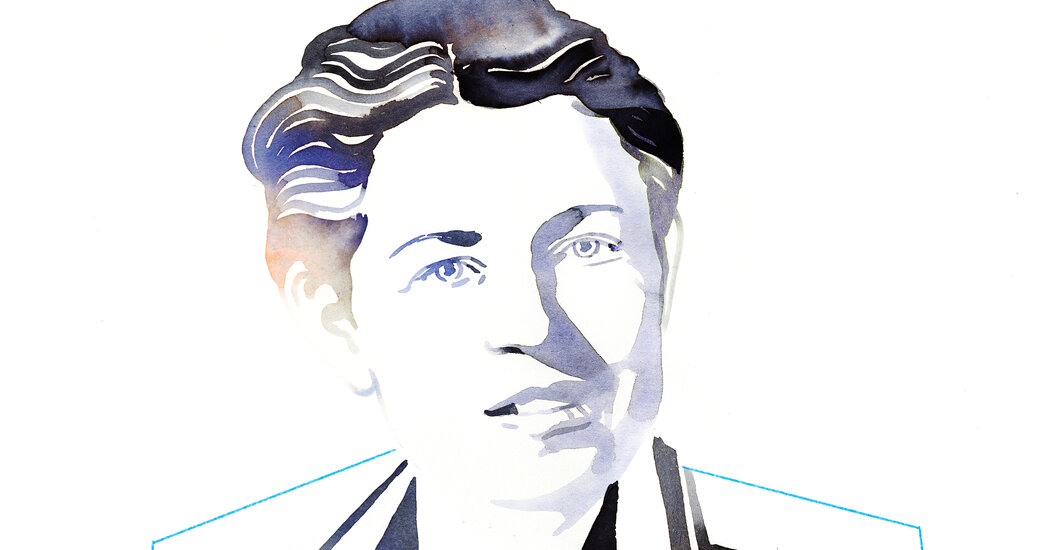This article is part of Overlooked, a series of obituaries about remarkable people whose deaths, beginning in 1851, went unreported in The Times.
They said she was too short to fly. It was 1938, and Polina Gelman, a teenager with her heart set on the skies, was trying to join a Soviet flying club. But in the cockpit of a plane, at a height of under 5 feet, she could barely reach the foot pedals with her toes and only peek above the control panel.
“Grow up, if you can,” a sympathetic instructor told her.
She never did grow tall enough, but she refused to give up. Instead, Gelman would train as a navigator — an adjustment that ultimately landed her a place in history as one of the Soviet Union’s famed “Night Witches,” the daring female aviators who flew bombing raids against the Nazis in World War II.
Gelman became one of its most celebrated members and the only Jewish woman who served in the war to earn a Hero of the Soviet Union medal, the U.S.S.R.’s highest commendation for military service, according to Arkadi Zeltser, a historian at Yad Vashem, the Holocaust memorial and museum in Israel.
“She was bright and ambitious as a young woman, but no one would have earmarked her for glory,” Reina Pennington, a historian at Norwich University in Vermont and an Air Force veteran who wrote a book about Soviet women fliers during World War II, said in an interview. “The war gave her the opportunity to display extraordinary qualities, not through any single act of heroism, but through a kind of stamina and determination that extended combat duty required.”
Gelman logged 1,058 combat mission hours — all of it under relentless German fire — with the 46th Taman Guards Night Bomber Aviation Regiment, nicknamed the Night Witches, or “Nachthexen” in German. The pilots got the name from powering down their engines as they approached their targets, whooshing through the darkness like witches on broomsticks.
Gelman was studying at Moscow State University on June 22, 1941, when Hitler launched Operation Barbarossa, the invasion of the Soviet Union that he expected to complete by year’s end. That October, as Gelman and other students were digging antitank trenches, “a rumor went down the ranks,” she wrote in an autobiography, that young women were being recruited for flying duty.
Gelman eagerly joined up. “Why should I study history when I can make history myself, you know?” she told Pennington in a 1993 interview.
She would be among a half-million Jews who are believed to have served in the Red Army, according to Yad Vashem. They fought not only for the survival of the Soviet Union, but also against the annihilation of their people in Nazi death camps in Poland.
“I have decided to go to the front,” Gelman wrote to her mother, adding, “I am a daughter of the Jewish people” with “a particular account” to settle with Hitler.
As the women arrived for flight training, an instructor barked out the first order of business: “boyish haircuts,” as Raisa Aronova, with whom Gelman would soon be sharing a plane, wrote in her postwar book, “Night Witches.” The women cut their locks gladly, eager to show that they were as willing to make sacrifices as their male counterparts were.
“Everyone was a patriot,” Gelman recalled. But these patriots were also “sisters.”
The night bombers flew Po-2 biplanes constructed of wood and fabric that had previously been used solely for training. (And because they had dual controls, navigators like Gelman often played the role of pilots.) Now they would enter battle against the most formidable military the world had ever seen. The planes’ top speed was about 60 miles per hour once fully loaded with bombs. “Sometimes a truck on the ground, a car, could go faster than we were going in the air,” Gelman said.
The planes “were very primitive,” Roger D. Markwick, an Australian historian who has written about women in the Soviet military, said in an interview. He added about Gelman, “The fact that she survived is actually pretty amazing.”
The shortcomings of the Po-2s turned out to be their strengths. Their slow speed, the materials with which they were made and their lacking radio signals made them nearly invisible to German radar and infrared tracking. As the planes approached German troops, the pilots would glide silently as they dropped their bombs.
The planes, about 40 in all, came in succession, each making as many as 15 runs a night. “What they’re doing is keeping the Germans from sleeping, making these random attacks that can come out of nowhere,” Pennington said.
Gelman herself flew 869 combat missions, standing out not just for her stamina but also for her precision, her composure under fire and her deep sense of political purpose.
Her experiences were at once representative and unique. “It is possible to call Polina Gelman, with full confidence, the embodiment of the roiling, fighting, revolutionary 20th century,” the author V. Selunskaya wrote in a postscript to Gelman’s memoir.
Polina Vladimirovna Gelman was born on Oct. 24, 1919, in Berdichev, Ukraine, during the civil war that gripped Russia after the Bolshevik Revolution of 1917.
Her parents were ardent supporters of the communist cause.
“When my mother was giving birth to me, a shell from the air destroyed half the hospital, and my mother was in the half of the building that was safe,” Gelman told the historian Anne Noggle, whose 1994 book, “A Dance With Death,” compiled oral histories of Soviet female aviators. Her father, Vladimir Gelman, was killed by counter-revolutionaries shortly after Polina’s birth; her mother, Yelya L’vovna Gelman, worked as a nurse during the revolution.
Polina was born in a region known as the Pale of Settlement, where Jews had been relegated under the Russian Empire; by 1926, Berdichev would be home to a Jewish population of 30,812. After her father was killed, Polina and her mother moved to Gomel, a city in southeastern Belarus that was also a center of Jewish life.
Gelman enrolled at Moscow State University in 1938 intending to study history. She reveled in the cultural plenitude of the capital. “Life seemed to us a holiday,” she wrote in her autobiography, “Of Battles, Fires and Friends-Comrades” (1995).
The holiday did not last long. As German tanks and infantry pushed toward Moscow, shattering hapless Red Army defenses along the way, the Soviet leader Joseph Stalin told Soviet citizens in a July 3 radio address that “everything must be subordinated to the interests of the front.” That effort would include women.
When Gelman and the 46th Guards were initially deployed, Germany was in the early stages of a plan to reach the oil fields of Baku, in what is now Azerbaijan, which would provide Hitler’s war machine with desperately needed fuel. The night bombers participated in assaults on German positions along the coasts of the Black and Azov Seas, as well as on the Crimean peninsula, where they dropped supplies to encircled Red Army troops.
The women were chronically sleep deprived. “We even had a kind of agreement between the pilot and the navigator that one of us would sleep going to the target and the other returning to the airfield,” the pilot Larisa Litvinova-Rozanova told Noggle, the historian.
As the tide began to turn, the 46th Guards accompanied Red Army troops across Belarus and Poland, and then into Germany itself. They flew their final mission outside Berlin, on the cusp of the Allied victory.
After the war, Gelman married Vladimir Kolosov and had a daughter, Galina. She studied languages and became a respected academic economist, retiring in 1990.
In her final years, she watched as the Soviet Union she had fought for unraveled. Having been born under Vladimir Lenin, she witnessed the ascent of Vladimir Putin.
She died at 86 on Nov. 25, 2005, and was buried in Moscow’s storied Novodevichy Cemetery, not far from the remains of Mikhail Gorbachev and Boris Yeltsin.
Pennington, the historian, interviewed the aging Gelman in 1993 in her Moscow apartment. As the interview ended, Gelman became concerned that Pennington was giving her too much attention.
“But it is not only me, we all had to fly, not only us, other crews as well,” Gelman protested. “Some people like to brag. I would not want to look like that.”
The post Overlooked No More: Polina Gelman: Fearless ‘Night Witch’ Who Haunted Nazi Troops appeared first on New York Times.




